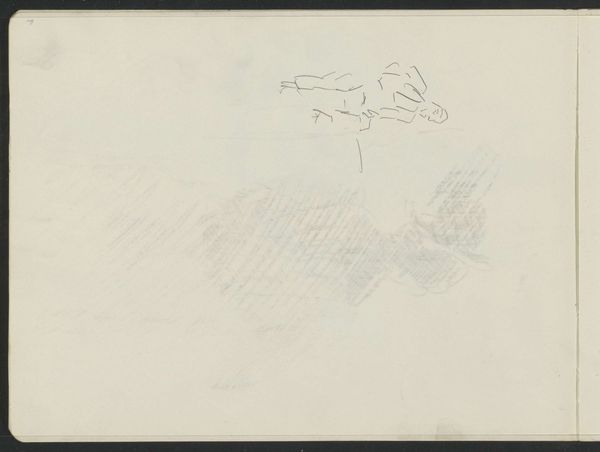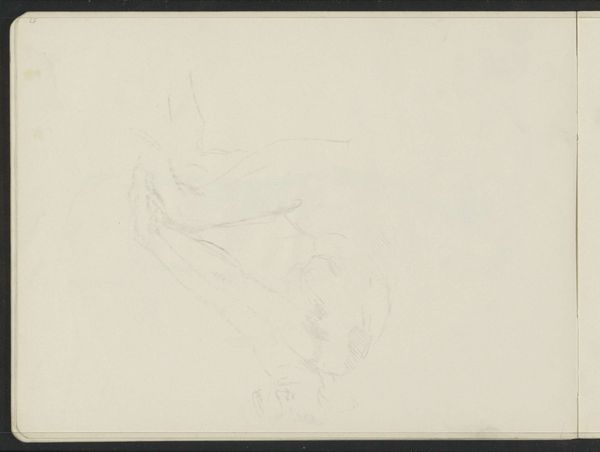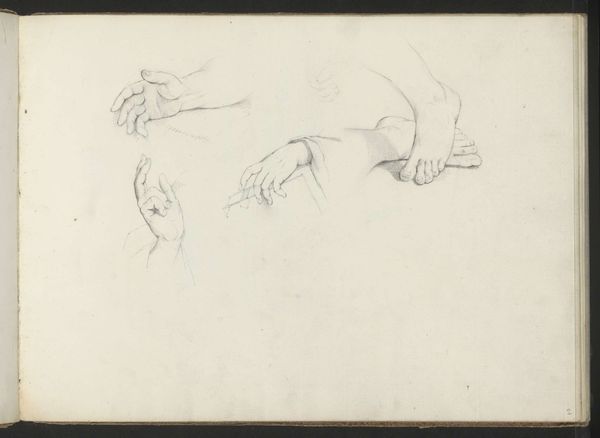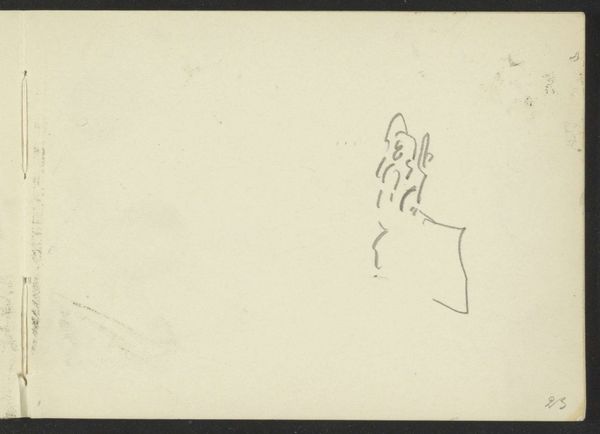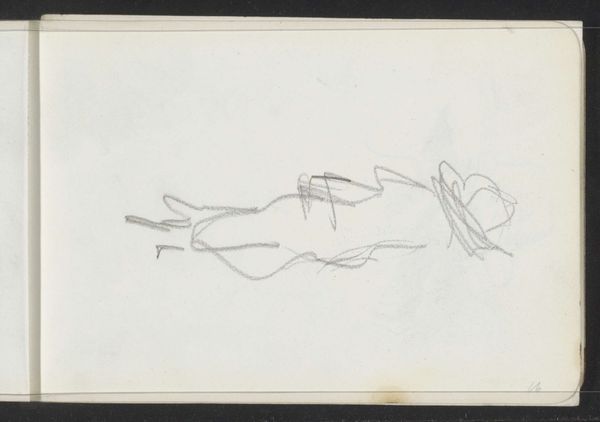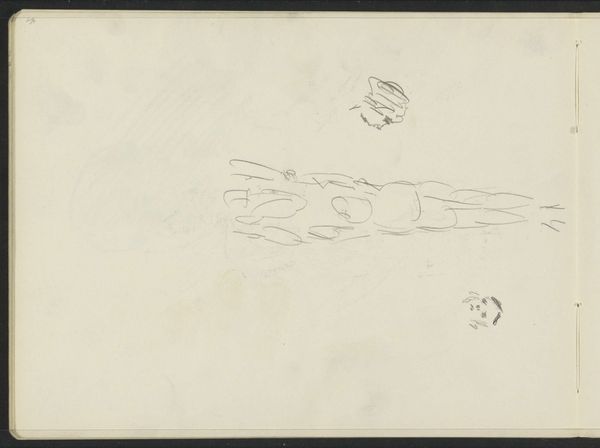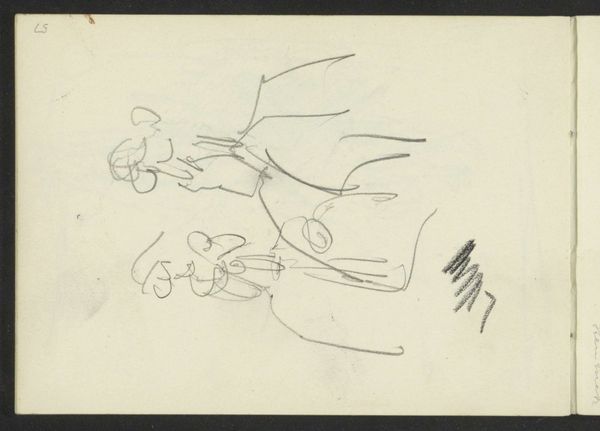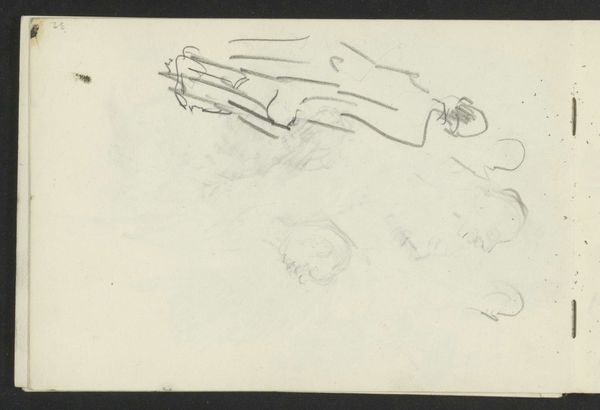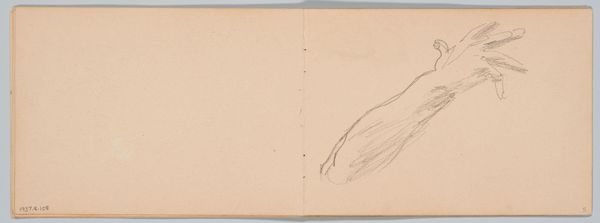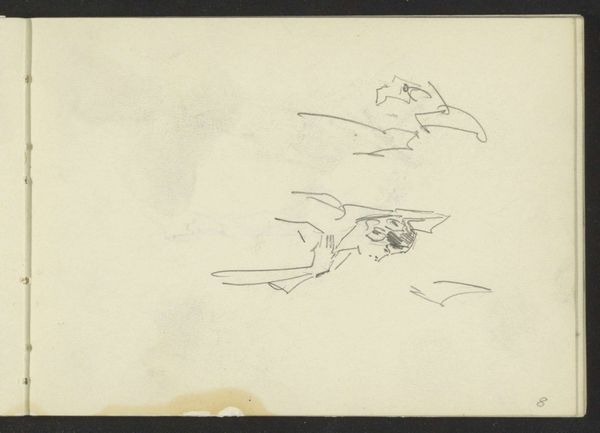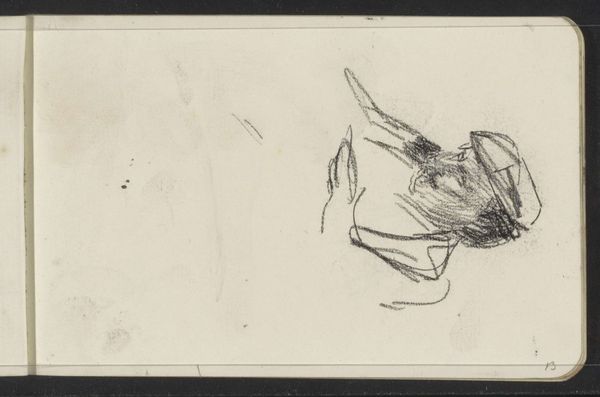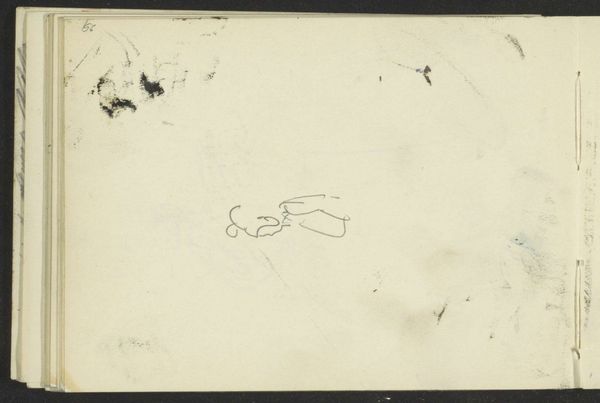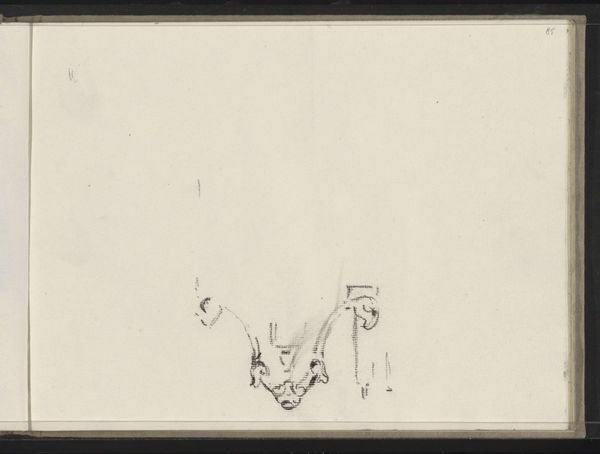
Copyright: Rijks Museum: Open Domain
Curator: So, what do you think about this sketch, this “Gymnastiekende figuur, mogelijk een acrobaat” (Gymnastic Figure, possibly an acrobat) by Isaac Israels? It’s dated between 1875 and 1934 and rendered in pencil. Editor: It’s quite minimalist, almost abstract, even though it depicts a figure. There's a real sense of movement and fluidity despite the simplicity of the lines. I find myself wondering what was Israels trying to capture. How do you interpret this work? Curator: I see this as a commentary on the evolving role of the body, particularly within the context of burgeoning public entertainment during that time. Israels captures not just a physical form but also something about performance and the body as spectacle. Consider the late 19th and early 20th centuries— a period rife with changing social expectations surrounding physical exertion, display and artistic representation, and issues of gender. Who was allowed to display the athleticism for example? What about race and class? How might those factors affected Israels representation of the performer? Editor: That’s a fascinating perspective! I was so focused on the pure aesthetics. Curator: Don't get me wrong, the Impressionist style invites that focus, yet by understanding what underpinned even simple subjects and representation – from feminist theories and gender studies, we get a nuanced perception of how societal constructs infiltrate art. Does this make you think differently about the piece? Editor: Definitely. It moves beyond just a quick sketch into something more meaningful. Thinking about who could be acrobats, and who got represented - or not represented - changes how I understand Israels's drawing. Thank you! Curator: Indeed. Recognizing the broader historical and political conversations interwoven with art can unlock entirely new appreciation.
Comments
No comments
Be the first to comment and join the conversation on the ultimate creative platform.
